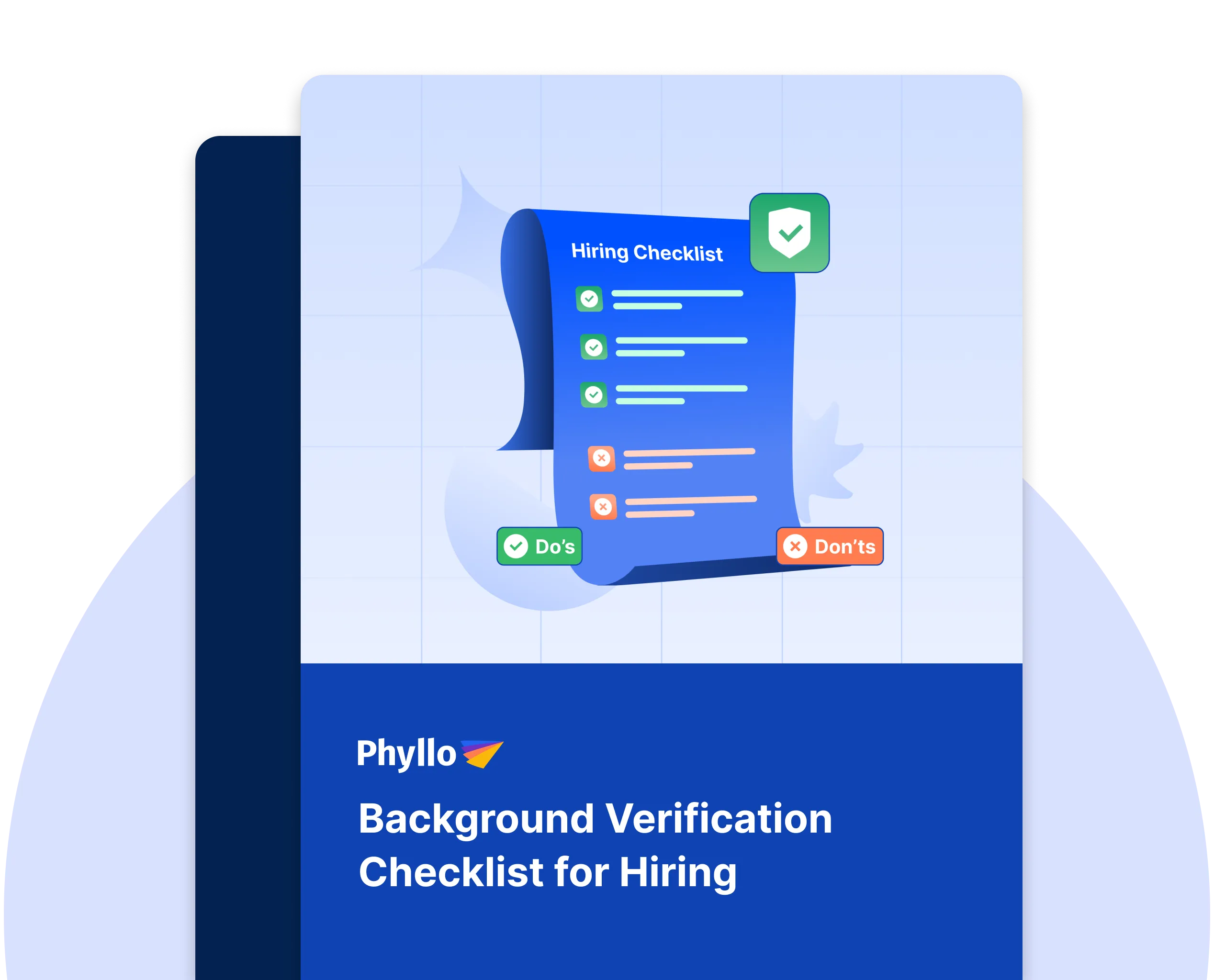Instagram remains one of the most influential platforms for brands, recruiters, and compliance teams. With over 2 billion monthly active users globally in early 2025, Instagram offers a rich source of behavioral insights that can inform decisions ranging from hiring to brand collaboration.
In this blog we share the top five ways Instagram API is used for social screening, influencer vetting, social media checks, and more. We also provide real‑world stats, comparison tables, and actionable guidance to help organizations maximize the value of Instagram API in 2025.
1. Pre‑Employment Social Screening with Instagram API
This section explains how employers automate and standardize candidate screening using Instagram data.
Why it matters
Automated Instagram screening helps employers understand a candidate's public online behavior and whether it aligns with company values and ethical standards. Manual reviews are prone to bias and inconsistency.
How Instagram API supports social screening
- Public post extraction
Retrieve recent posts, captions, images, reels, and hashtags for sentiment analysis. - User metadata analysis
Track account age, follower/following ratios, and bio descriptors. - Engagement history
Review comments, mentions, and interactions by and about the candidate. - Image analysis & behavior detection
Use computer vision tools to detect explicit content, hate symbols, or other risk factors.
Example statistics
- A 2023 survey found 90% of U.S. employers check social media during recruitment (getphyllo.com, en.wikipedia.org).
- A CareerBuilder report noted 57% of employers have rejected candidates due to social media content (getphyllo.com).
Benefits of API integration
- Scalable screening across hundreds of candidates
- Reduced legal and compliance risk via uniform criteria
- Quick turnaround with automated flagging and ranking
2. Influencer Vetting and Brand Safety
This section highlights how brands vet Instagram creators before and during campaigns using API data.
What brands are looking for
Brands need to ensure influencers align with brand values, audience demographics, and legal standards before partnerships begin.
How Instagram API enables influencer vetting
- Content history analysis
Retrieves historical posts and stories for review. - Sentiment trends
Measure positive vs negative commentary around posts. - Brand collaborator mapping
Track previous partnerships to assess fit and saturation. - Compliance signals
Detect sponsored content disclosures and avoid illegal promotions.
👉 Learn how Phyllo’s Influencer Vetting for Brand Safety leverages API data to automate vetting workflows.
Supporting data
- Influencer marketing projected to hit $32.6 billion in 2025 (getphyllo.com, influencermarketinghub.com, arxiv.org, thunderbit.com).
- 63% of shoppers are more likely to buy from trusted influencers (dash.app).
3. Ongoing Campaign Monitoring
This section examines real-time vetting of live campaigns to prevent brand safety exposure.
Why it matters
After onboarding, an influencer’s public content can shift. Brands need tools to monitor behavior during campaigns.
API‑driven monitoring capabilities
- Live sentiment alerts
Trigger notifications for sudden negative commentary. - Content policy compliance
Detect unauthorized content or off‑brand posts. - Engagement anomalies
Spot abnormal spikes that may hint at bots or astroturfing.
👉 Explore Phyllo's Social Media Intelligence for active monitoring capabilities.
Real‑time effectiveness
- Instagram users spend ~33 minutes per day, providing rich real-time data (cropink.com, getphyllo.com, metricool.com).
- Carousels and Reels see high engagement; average reach of 3 % per post (socialinsider.io).
4. Discovery of Unethical Behavior and Misalignment
This section covers how API tools detect problematic patterns that risks brand integrity.
What triggers the need for scrutiny
Brands must locate whether influencers or employees use hate symbols, spread misinformation, or participate in potentially illegal behavior.
API features to support detection
- Keyword and phrase filters
Scan captions and comments for offensive or harmful language. - Image recognition
Detect prohibited images such as violence or substance misuse. - Network assessment
Evaluate follower profiles for extremist or bot activity. - Historical archive review
Identify old content that may be resurfaced later.
Market context
- 10% of Instagram accounts may be active bots (en.wikipedia.org)
- 70 % of global users turn to Instagram for purchases, hence high reputation stakes (sproutsocial.com).
5. Influencer ROI and Performance Attribution
This section explains how Instagram API helps brands assess return on investment beyond vanity metrics.
Why ROI tracking matters
Brands need performance-driven data to justify influencer partnerships in their marketing mix.
Data points API can capture
- Impressions and engagement metrics
Tap into post reach, saves, shares, and follower growth. - Sentiment weighted engagement
Differentiate between positive and negative reactions. - Click‑through behavior
Tie tracked links to campaign conversions. - Demographic reporting
Pull follower age, gender, and location if accessible.
Industry stats
- Brands earn $6.50 in revenue for every $1 spent on influencers (blog.hootsuite.com, clearvoice.com, analyzify.com).
- 80 % of brands track sales from influencer campaigns; 54 % use reach/impressions (clearvoice.com).
Comparative Overview of Instagram API Use Cases
Here is a snapshot comparison of the API use cases and their impact:
2025 Instagram API Trends for Social Screening
This section outlines emerging trends shaping API use and social screening practices.
1. AI‑powered sentiment and image intelligence
Combining Instagram API with AI tools allows nuanced detection of tone, irony, and unlabeled brand content.
2. Platform expansion
APIs are extending to features like Reels, Stories, Live video, and IGTV to ensure full visibility.
3. Regulatory compliance
Third‑party API providers now include full FCRA, GDPR, and CCPA compliance for HR and enterprise use.
4. Deeper network analytics
Screening now includes analytics of followers, comments, and follower‑of‑followers networks to detect bots or extremist linkages.
Implementation Best Practices
This section guides on responsible and effective deployment of Instagram API for social screening.
1. Define clear screening policies
Types of flags, historical date range, acceptable thresholds, and decision guidelines.
2. Avoid bias
Implement consistent screening criteria. Human‑in‑the‑loop workflows bolster fairness.
3. Ensure user privacy
Access only public content with consent. Encrypt stored data and follow retention policies.
4. Integrate within workflows
Connect to ATS, influencer CRM, compliance dashboards, and alert systems for seamless screening processes.
5. Keep your model updated
Update keyword lists, algorithms, and compliance logic every quarter to reflect evolving norms.
Case Study: How Brand X Leveraged Instagram API for Risk-Free Influencer Campaigns
When influencer campaigns scale, so do the risks of reputational damage. This case study takes you inside the operations of a fictional but realistic apparel brand, “Brand X,” and how it overhauled its influencer vetting strategy using Instagram API to achieve safer, smarter collaborations.
Challenge
Before integrating Instagram API, Brand X faced frequent challenges in identifying red flags among influencer profiles. Their marketing team had limited tools for deep social media analysis and relied heavily on manual review processes, Excel spreadsheets, and gut instincts. This approach often resulted in surface-level assessments and exposed them to risks, including missed posts that contained profanity, political controversies, and even subtle hate speech.
In one incident, the brand collaborated with an influencer who had a sizable following and impressive engagement metrics. However, soon after the campaign launched, the brand faced backlash when old Instagram Stories resurfaced showing offensive humor and controversial comments. The brand had no prior knowledge of these posts due to the ephemeral nature of Stories and the limitations of manual review. The PR fallout affected customer trust and took weeks of damage control to resolve.
This incident served as a turning point. Brand X realized that modern influencer marketing required more than basic profile checks. They needed a scalable, accurate, and real-time vetting mechanism that could go deeper than a quick Instagram scroll.
Solution
To solve this, Brand X partnered with a compliance tech vendor that integrated the Instagram API through Phyllo’s Social Screening and Influencer Vetting for Brand Safety products. The objective was to introduce automated social screening workflows with real-time detection of risky behavior, not just before campaigns, but throughout their duration.
With the Instagram API integration, the brand gained access to:
- Content history from public posts and captions, allowing for full-text and image-based analysis across years of content
- Sentiment scoring and toxicity flags for posts and comments, powered by natural language processing
- Behavioral signals such as frequent use of aggressive hashtags, emoji patterns, or alignment with polarizing topics
- Image recognition capabilities that could automatically detect explicit content, violence, or illegal behavior from visual posts
- Monitoring dashboards to track all influencers in real time, with automated alerts for non-compliant behavior
Through Phyllo’s platform, they were also able to connect vetting outputs directly to their influencer CRM, enabling the marketing and legal teams to jointly assess creator profiles through a single, streamlined view.
👉 Learn how you can automate this process using Phyllo’s Influencer Vetting for Brand Safety and Social Screening solutions.
Outcome
Within 30 days of implementing the Instagram API integration, Brand X transformed the way it onboarded and monitored influencers.
Here’s a summary of what they achieved:
- 300 influencers were vetted programmatically in just 48 hours using pre-set criteria for keywords, sentiment, image patterns, and engagement metrics
- 5 profiles were flagged for potential brand safety concerns including past hate speech, insensitive posts, and unauthorized brand partnerships
- No PR crises occurred during the following three campaigns, unlike their previous experience
- Campaign ROI improved by 20%, driven by better creator-brand alignment, higher audience trust, and improved engagement metrics from pre-vetted creators
More importantly, Brand X gained internal alignment between marketing, compliance, and legal teams. Instead of working in silos and relying on subjective reviews, they could now collaborate based on objective, consistent data sourced directly via Instagram’s API.
By the end of the quarter, the company decided to standardize API-powered vetting as part of their influencer strategy and expanded this model to other platforms including TikTok and YouTube through Phyllo’s multi-platform integrations.
Future Outlook: Instagram API and Social Screening After 2025
Looking ahead, we expect:
- Real time alerts for brand safety and legal risks
- Cross‑platform screening combining Instagram, TikTok, X, and LinkedIn profiles
- Privacy‑enhancing AI to flag high risk without storing raw data
- Decentralized identity verification to link real-world credentials with social profiles
Frequently Asked Questions (FAQs)
1. What is Instagram API social screening?
It is the use of Instagram’s data APIs to automatically analyze public profiles, posts, followers, and interactions to assess risk, compliance, reputation, or alignment.
2. Is social screening legal?
Yes when it respects privacy laws (GDPR, CCPA), accesses public data only, and uses consistent criteria with documented consent for ATS or employer use.
3. What metrics can API pull for influencer vetting?
Post history, sentiment scores, engagement rates, follower growth, network authenticity, and sponsored-content disclosures.
4. How accurate is sentiment analysis on Instagram?
When powered by advanced AI, it can reach around 85–90 % accuracy for language context, though accuracy varies for local slang and sarcasm.
5. Can Instagram API detect bots or fake followers?
Yes. Screening tools can analyze follower creation date, following/follower ratio, post frequency, and engagement authenticity to surface bot-like patterns.
6. Does API analysis include Stories and Reels?
Yes. Modern screening platforms include Stories, Highlights, Reels, and even Live video metadata in their analysis.
7. How quickly can screening run on 500 profiles?
Automated API-driven systems can process 500 profiles in under an hour, sliding to real-time alerts for new flagged content.
8. Which Phyllo tools support Instagram social screening?
Phyllo offers Social Screening for pre‑employment checks, Social Media Intelligence for monitoring, Influencer Vetting for Brand Safety for campaigns, and Social Listening API for multi-platform analysis.
Instagram remains a critical channel for modern screening operations, whether for HR, influencer partnerships, or reputational management. By 2025, Instagram API has evolved into a powerful, reliable, and scalable engine for social screening. If your organization wants deeply contextual and compliant insights from social data, integrating Instagram API into your workflows is essential.











.webp)
.webp)



.webp)